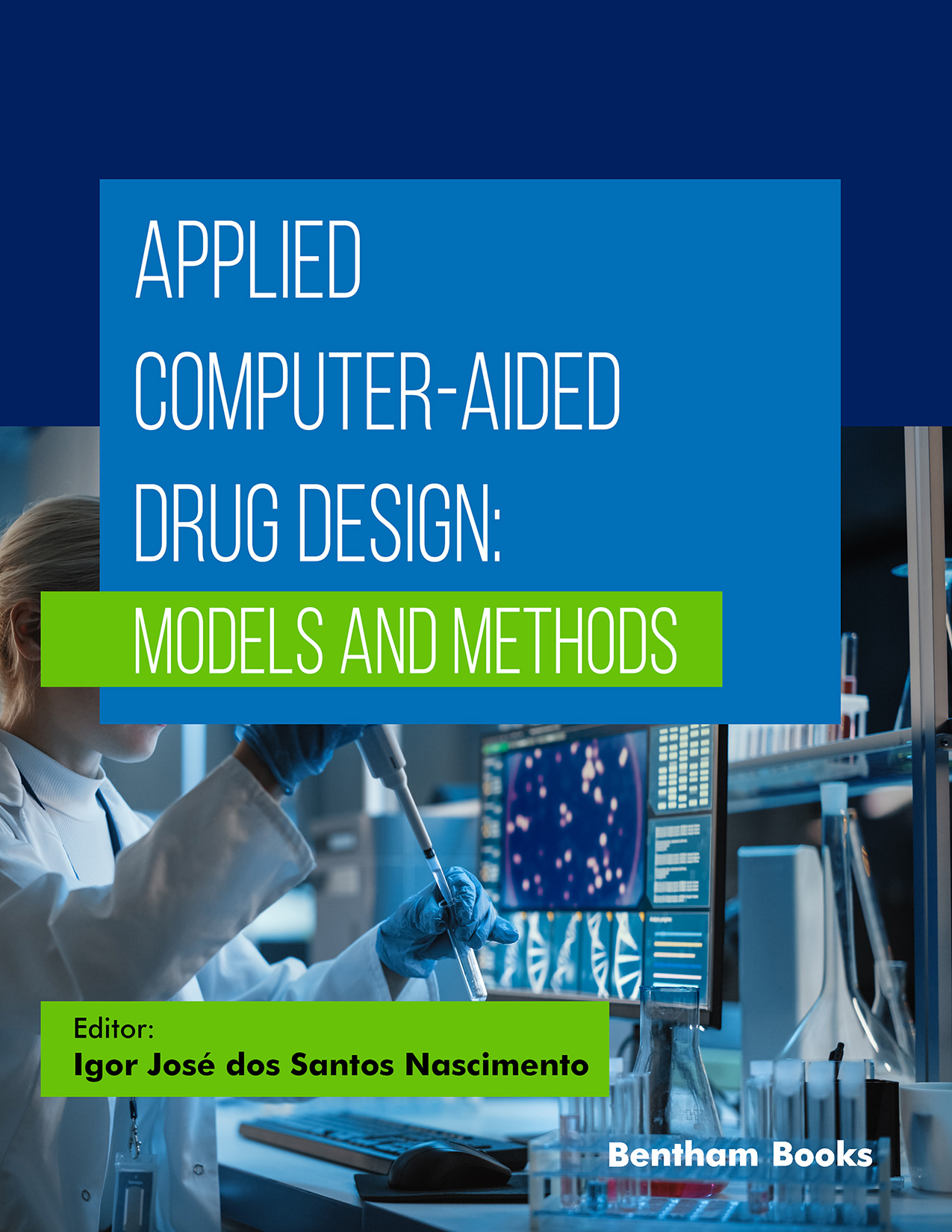The drug discovery and development process is time-consuming and demands a high financial cost. In this way, it is estimated to take approximately 10 to 17 years, costing around 4 billion dollars. This stimulates the advancement of new methodologies that can accelerate the discovery process and increase the probability of a promising molecule. In addition, constant developments in informatics and computations have led to the routine use of high-performance computing in medicinal chemistry. Thus, Computer-Aided Drug Design (CADD) methods emerge, capable of providing critical information for the design of new molecules, essential in any new drug discovery program [1, 2].
In this context, the book “Applied Computer-Aided Drug Design: Models and Methods” appears, presenting the computational methods used by researchers and pharmaceutical companies. Each chapter explains a technique with high precision so that readers can apply it in their research.
This first edition is organized into nine chapters, namely:
Chapter 1 “Ligand- and Structure-Based Drug Design (SBDD and LBDD)”: Promising Approaches to Discover New Drugs. Here, the reader will have an approach from a historical perspective on strategies used in designing new drugs until the development of LBDD and SBDD strategies, exemplifying important discoveries of commercial drugs.
Chapter 2 “Quantitative Structure-activity relationship (QSAR) in studying the biologically active molecules”. This chapter will bring the principles and methods of this technique based on LBDD. It will present a historical perspective from the first QSAR models to the most current ones like 6D-QSAR. Furthermore, it provides a great read on protocol validation procedures, which are crucial to successful QSAR studies.
Chapter 3 “Pharmacophore Mapping: An Important Tool in Modern Drug Design and Discovery”. This chapter approaches a method that can be applied to SBDD and LBDD protocols. The reader will have a historical perspective of the evolution of the method, a presentation of the leading software used, and, in the end, a great background on carrying out a well-validated virtual screening protocol based on pharmacophore. Further, the text addresses successful studies and how their protocols were carried out.
Chapter 4 “Up-To-Date Developments In Homology Modeling”. Similar to the previous chapters, the readers will have a theoretical basis on the technique, quite explored when there is information about the target without an experimental structure. Homology modeling is a powerful tool for constructing and applying molecular targets in drug design studies. With this, readers can perform this protocol safely and efficiently.
Chapter 5 “Anticancer Activity of Medicinal Plants Extract and Molecular Docking Studies”. In fact, this is the most used tool by drug developers worldwide. Through this technique, new drugs can be safely planned, or even virtual screenings can be carried out to find new drugs. Thus, the authors will bring the technique's theoretical framework, the method's evolution, computational software, and studies in which the application of molecular docking was vital to finding promising molecules.
Chapter 6 “FBDD & de novo Drug Design”. In this chapter, the main tools used in Fragment-Based Drug Design (FBDD) and de novo Drug Design (DNDD) will be presented, mainly through in silico approaches. It is essential to highlight that these methods control molecules from scratch, generating critical hits that later become optimizable leads. In addition, all the theoretical frameworks and important discoveries are applied through these strategies.
Chapter 7 “Molecular simulation in drug design; an overview of molecular dynamics methods”. Despite being a promising technique, molecular docking has several problems, such as disregarding the flexibility of the active site during simulation. Thus, this chapter will address the molecular dynamics technique, which tries to solve some problems from molecular docking. In fact, with the popularization of computers in drug design, this is the fastest-growing technique, and its application is essential in drug discovery programs. Thus, with great clarity, the authors present the theoretical framework and how to apply it in a design campaign for new drugs.
Chapter 8 “Quantum Chemistry in Drug Design: density function theory (DFT) and other quantum mechanics (QM)-related approaches”. The application of quantum chemistry (QM) protocols in predicting biological activity or enzymatic mechanism are highlighted in the current drug discovery process. Increasingly, researchers are adopting these tools in their drug development projects. Thus, in this chapter Rodrigues et al. They explored the entire theoretical foundation of QM, focusing on applying Density Functional Theory, providing new insights to medicinal chemists to use in their projects.
Chapter 9 “Free energy estimations for drug discovery: Background and perspectives”. This chapter is one of the most current and essential in this book. Here are shown energy predictions and applications of perturbation theory in drug design. This approach has gained increasing prominence in medicinal chemistry, mainly for solving some limitations related to classic MD simulations. In this way, an excellent theoretical framework and its application in drug design are shown with updated examples.
I hope that with this book, readers will have new insights and be able to safely apply the protocols shown here, providing new trends that help discover new drugs to improve the quality of life of the world's population.
Igor José dos Santos Nascimento
Programa de Pós-graduação em Ciências Farmacêuticas (PPGCF)
Departamento de Farmácia
Universidade Estadual da Paraíba
Campina Grande-PB
Brazil

